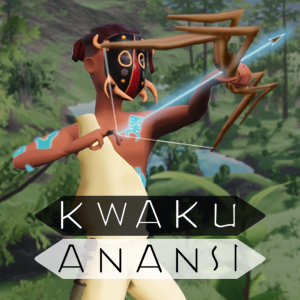I have at this point become a fan of some of the work of Maurice Delafosse (1870 – 1926) a French ethnographer who, like the British ethnographer Robert Sutherland Rattray (whose focus was on the Asante people of Ghana), explored much on the cultures and histories of the black peoples of Africa. This book of his, Les Noirs de l’Afrique, is unique. In this book, he really goes “out to town” on the information about black people in Africa, exploring connections with Lemuria, Atlantis, Ancient Egypt, and even the Hebrew connection. He does not leave out the more recent connections with the Ghana, Mali and Songhai empires, other African groups, interactions with the Imazighen (i.e., ‘Berbers’) and much else. All of this in 1922, an entire century to date, in 2022. Suffice to say, this material seems ‘ahead of its time’, and from no other than a serious ethnographer who was also a French colonial administrator of African territories.
It was during work on my latest book that I came across Delafosse as a source. I immediately found his work interesting when he gave accounts of the Soninke people from their own sources, which included an account of the lineage of Maghan Diabe Cisse, the founder of the Ghana empire. Cisse is a descendant of Hebrew King Solomon. More on that, and on its implications, in Kemetic Alchemy and Tantra.
Kemetic Alchemy and Tantra
In chapter 5 of this book, we learn a curious fact about a people known as the Tebu. From historical accounts of the Bono Akan people given to Eva Meyerowitz, we learn that some of their ancestors were known as the Garamantians (i.e., Koromante), and that these Garamantians were in the Tibesti region around Lake Chad. The Garamantians migrated from this region, staying with the Dogon people around Bandiagara for a time, and then migrating further south, staying with the Gurmanche for a time, until settling among the Bono people. Today, the remnant of these Garamantian people are known in the region of Lake Chad as the Tebu people (sometimes written in French sources as Tibou or the Toubou). One branch of these people are called the Dazagara. The Dazagara are Gara, or Gur people, are the Garama (Gara-Ma) or the Gurma (Gur-Ma), who were the same as the Germa/Kerma of Ancient Nubia/Kush. Same people as those of the Gur language group across West Africa (i.e., “DiaMo”) as well as some of the Garamantian/Koromante peoples of Akan extraction. All of these peoples (Tebu peoples, Gur peoples, Akan peoples) are the descendants of Ancient Kemet and Kush.
At the very end of chapter 6 of this book, Delafosse appears to lament the incursion of “Europeanization” and in particular of “Christianization” of African peoples. In his view, while on the one hand he appears to think that the Europeanization of the African is important, on the other hand he sees that the process is bringing about the same changes to African peoples and cultures as did the Islamization of African peoples. In this regard, Delafosse bears some similarities with Rattray, who also lamented the loss of culture by the Europeanized African. Rattray had this to say in his book Ashanti, of the Europeanized African:
“I have suggested, in the preface of this volume, that our information concerning the anthropology of this part of Africa has hitherto been almost wholly derived from two main sources: (a) Information from educated Africans, who have generously placed at the disposal of the European inquirer facts they themselves knew, or had acquired from their own countrymen, and (b) Information obtained by Europeans themselves from uneducated Africans (i.e. uneducated according to European standards)— this information being solicited from these ‘bush’ or ‘raw’ natives through the medium of an interpreter. The educated African, however, has been cut off from, and is out of sympathy with, the life of his own people. He has learned in nine cases out of ten, if he has not actually been taught, to despise his own illiterate brethren and the unlettered past of his race. Concerning that past he really knows little or nothing, and generally cares less.” (Rattray, 1923, p. 87)
What was true in Rattray’s time was also true in Bosman’s time (who was before Rattray), who Rattray quotes shortly after his own quote above, to underscore a phenomenon. This phenomenon is one where Africans, once they become “Europeanized”, especially after they take up Christianity, proceed to get rid of their own religions and customs, along with a lot of their culture in favour of the European one. That which Rattray intimated literally a century ago (which, ironically was the exact time Delafosse also published his book that is the subject of this post) is still true today. Today, many Africans I meet deem it to be ‘progress’ to leave behind their traditions and their customs in favour of ‘progress’, which is, the Western way.
But, is that really ‘progress’? If so, then why is it that the Japanese or the Vietnamese people still venerate their ancestors, even as they have taken up Westernization to a great extent? The Japanese in particular can arguably be called the most industrialized (or Westernized, if you will) nation in all of Asia. Yet, Japanese people still visit their ancestral shrines. They still pray and make offerings to spirits, in their Shinto spiritual practices.
The reason that I have so far surmised, my dear African brothers and sisters, is because the Japanese were never colonized with their territory and government taken over by foreigners, such as was the case with many African peoples. Therefore, in order to reverse the damage done to African people, it is up to us to decolonize ourselves. Decolonization is not only a physical process entailing the departure of the colonial power and the granting of political independence. On a deeper and even more important level, decolonization entails dismantling or even in some cases reversing those institutions that were put in place at the societal level, that have taken over the African’s psychological (including religious), mental, and spiritual constitution.
Rattray during his time had two options: (a) the (European) educated African, who could care less about her or his traditional culture, and (b) the illiterate African who is very close to her or his traditional culture. However, there is a third option. That third option, my sisters and brothers, is that of the hybrid. Option (c) is the (Western/modern) educated African who is also very close to her or to his traditional culture. That is the group I fall in, and it is the group that several other Africans I know also fall in. It is not a group that only recently sprung out of thin air. History shows that there have been individuals of this group even back in the colonial days. One example was J. B. Danquah, an individual who was educated to a great extent in both the traditional way and the Western way. It is true that Danquah was a member of an Akan royal family and as such was close to traditional culture. That would have surely played a role. The royal households are still the custodians of traditional culture.
Whether you are of royal background or not, in today’s world it is still possible to educate yourself in diverse ways, and to work on decolonizing your mind and especially your psychological/subconscious levels. Malidoma Somé is another African individual who showed the way, who typified this third way, this “option (c)”. He called himself a ‘hybrid’.
Moving on let us return to Delafosse, who, like Rattray, appeared to have been very much on the side of the African. Perhaps more than any other European of his time, Delafosse was exposed to, and studied the African intimately, given his exposure to different African groups across French colonies in Africa (Rattray did most of his work in what is now Ghana). Delafosse expresses a view that I hold true as well. That view, is that beneath the variations of language and geography, Africans, by blood, and by extension their cultures, the root cultures, are very much one people. Delafosse (1922) said:
“Tous ceux qui ont voyagé dans l’Afrique noir et en ont étudié sur place les habitants ont remarqué combien ceux-ci diffèrent plus les uns des autres par les manifestations matérielles de leur activité que par leurs coustumes sociales, leurs croyances religieuses, et leur caractères intellectuels et moraux. Il y a à cela une raison qui paraît évidente: la race partout la même, à peu de chose près, tandis que le milieu physique varie de région à région; or chacun sait que les influences du milieu physique se font sentir surtout dans le domaine des faits matérielles et que ceux-ci, ils influent à leur tour sur la vie sociale et morale des peuples, ne la modifient qu’à la longue et souvent d’une manière à peine perceptible.” (p. 129)
In other words, what is said in the French language is that Africans are very much one and the same people everywhere, despite surface differences and variations that are apparent in different geographical locations. The reason for this “sameness” underneath the variations of language and clothing, in my view, is that there are certain major bloodlines that run through African people. These bloodlines are the same in most places across the continent. Three of those major bloodlines, are those I have recently (in my book Kemetic Alchemy and Tantra) been calling the “DiaLa”, the “DiaMo”, and the “DiaGha”. Of these three, the DiaGha are the largest group, being the original indigenes/inhabitants of Africa, for the longest of times. There are also other bloodlines besides these three, but all across Africa, the one bloodline most distributed across black peoples among the three, of the continent, is the DiaMo. So, for example, Delafosse in chapter 7 gives an example that in his reckoning, the Dioula, a Mande people (i.e., strongly “DiaLa”) can be seen to originate in Kemet (Ancient Egypt), while the Senufo people, a Guan people (i.e., strongly “DiaGha”) have been inhabiting their region of West Africa for millennia. This goes to show that underneath the surface differences of clothing and physical appearance, Delafosse in this book was able to penetrate the mystery of the origins of African peoples to an extreme extent.



